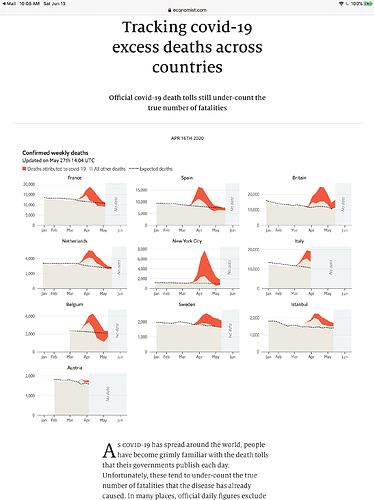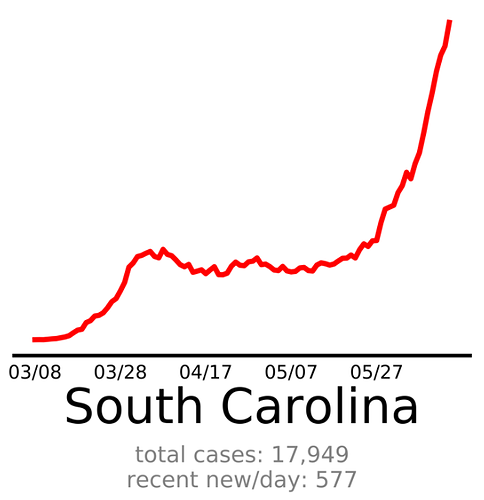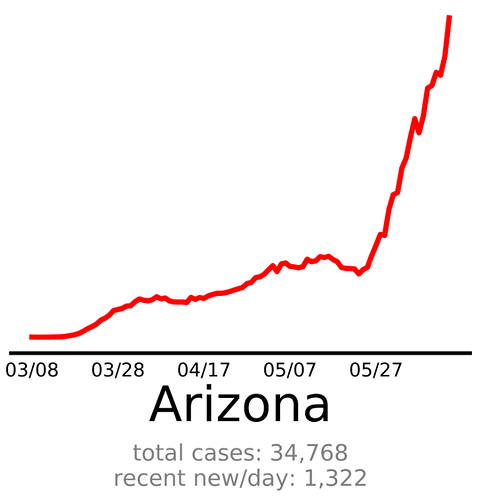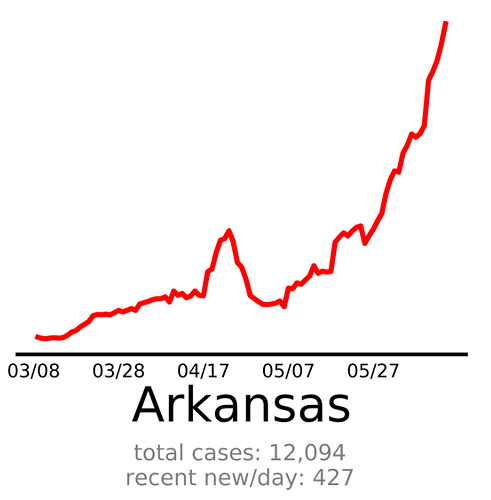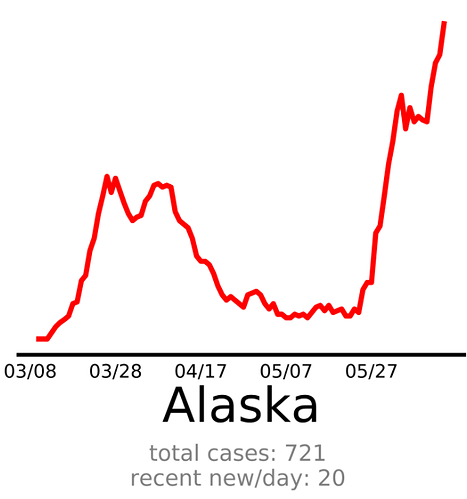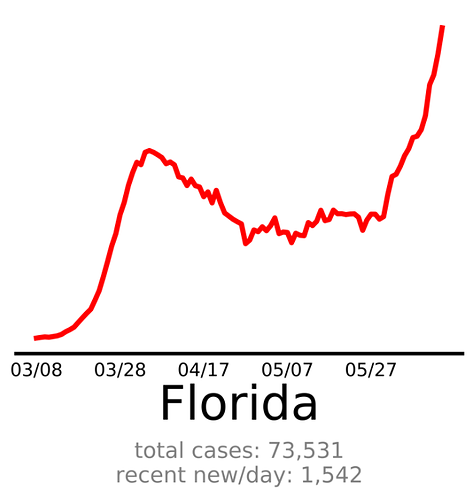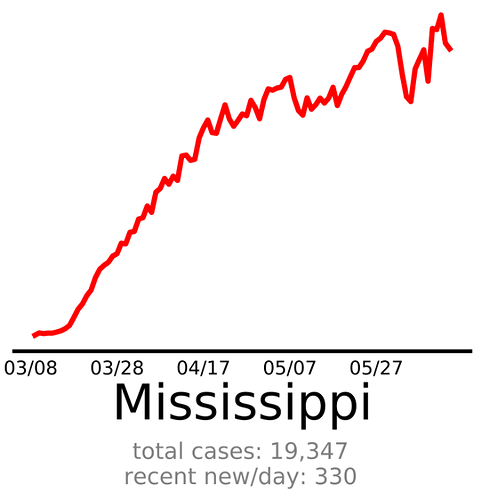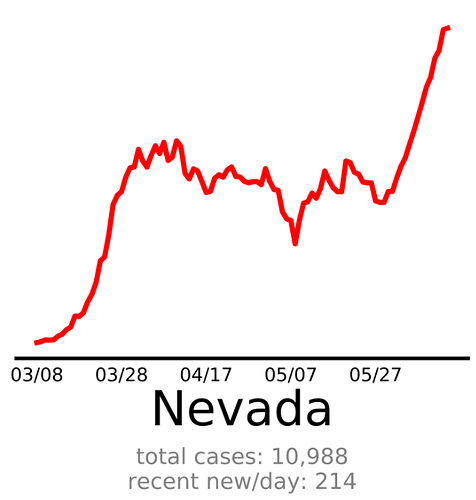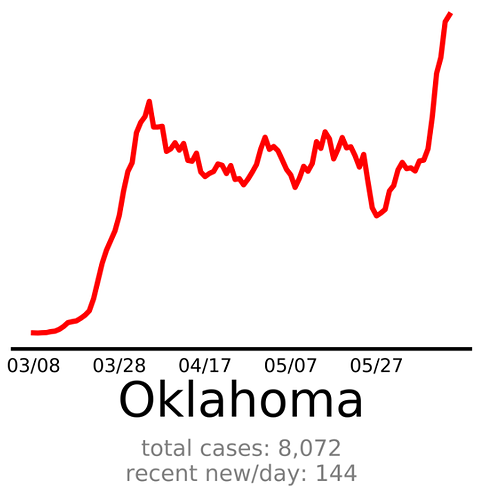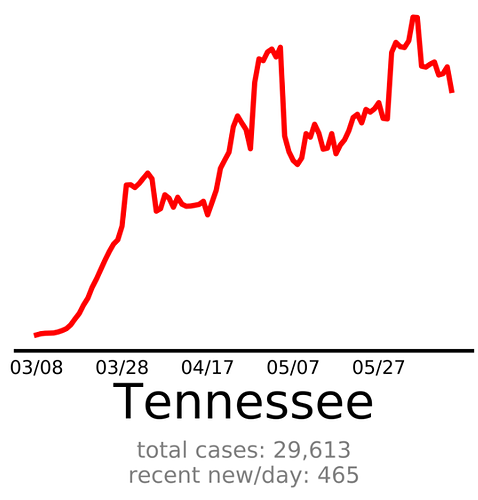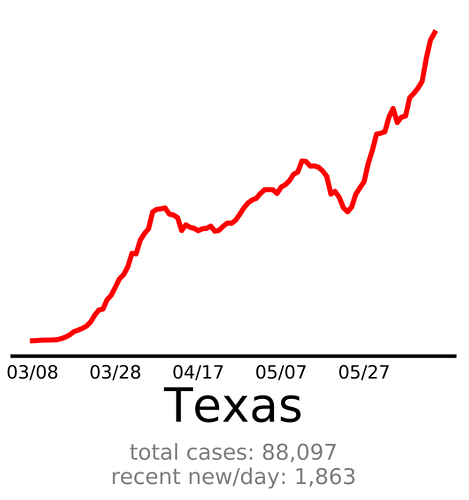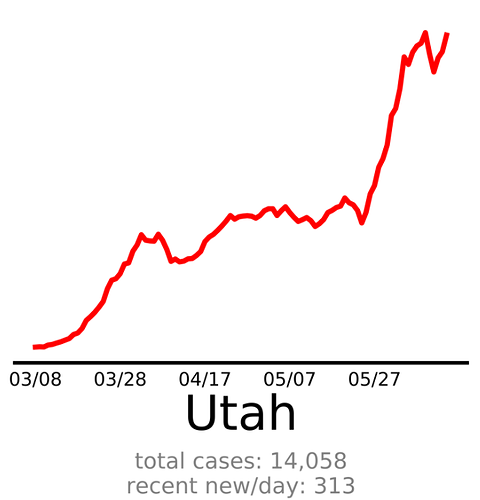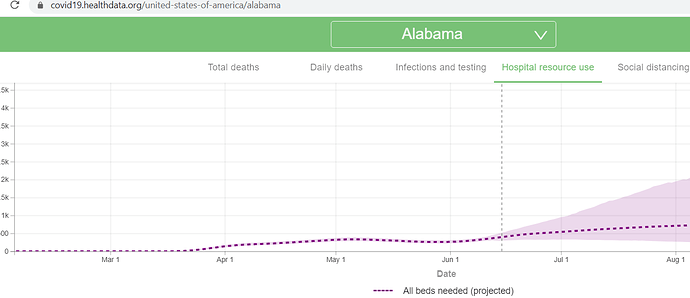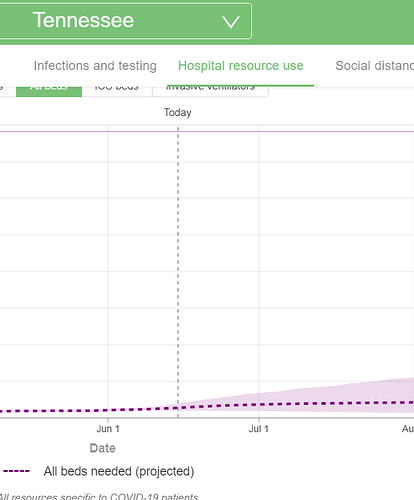Actually, Vance, the first out of quarantine was South Carolina. Let’s see how the new confirmed cases graph is trending there:
Now let’s look at Arizona, which reopened on May 4:
Notice a trend?
Let’s take a look at Arkansas, which reopened salons on May 6 and never had a statewide stay-at-home order:
North Carolina, which reopened significantly on May 8 and almost fully on May 22:
Alabama, where the state’s stay-at-home order to expired on April 30. Retail stores opened first; restaurants, salons and gyms on May 11; entertainment venues opened May 22.
Alaska eased many restrictions in late April, before Georgia, and fully reopened May 22:
Florida reopened significantly on May 4 and almost fully on May 22:
In Kentucky, houses of worship reopened in early May and most retail reopened prior to Memorial Day:
Mississippi’s stay-at-home order expired on April 27 and previously closed retail began reopening. The state fully reopened on June 1.
Missouri reopened almost all businesses and venues on May 4, although some large, indoor venues have seating restrictions. The graph shows the surge of new cases that occurred within a couple of weeks.
Nevada mostly reopened on May 9, and casinos reopened June 4. How has that been working?
Oklahoma mostly reopened on May 1.
Tennessee reopened (with some restrictions) restaurants on April 27, retail venues on April 29, and gyms on May 1.
Texas reopened on April 30, although it did place some seating restrictions on restaurants and large venues.
Utah never had a statewide stay-at-home order, and allowed gyms, salons, and restaurants to reopen May 1 (with some restrictions).
One thing all these states have in common is a lack of any mask regulations.
It is true that Georgia and Ohio are outliers by comparison. But it is very, very unwise to point to outliers when making an argument for an ethical choice or a governmental policy.
Best,
Chris Falter
My data source: https://www.endcoronavirus.org/

